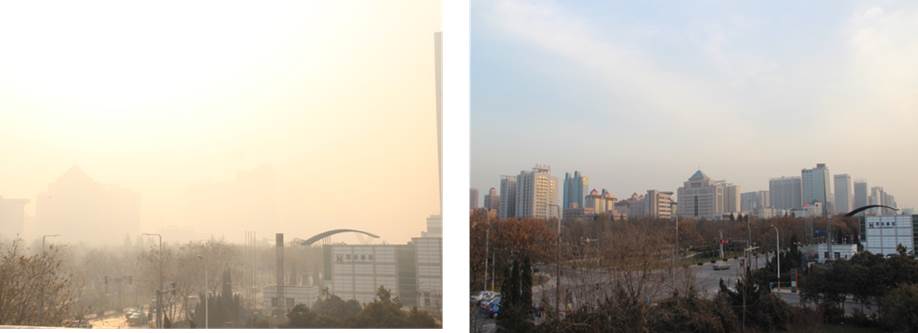Haze Pollution in Chinese cities | Haiyan Ni
Name: Haiyan Ni
Supervisor:
Dr. U. (Ulrike) Dusek (Centre for Isotope Research, ESRIG/RUG)
Period: September 2014 - August 2018
Summary
Serious haze pollutions characterized high aerosols loading often affect most cities in China, due to rapid urbanization and industrialization. In response to the extremely severe haze pollution the Chinese State Council announced its aim to reduce concentrations of PM2.5 (particulate matter with an aerodynamic diameter less than 2.5 micrometers) by up to 25 per cent relative to 2012 levels by 2017. However, the factors contributing to the high levels of particulate matter present during haze pollution event remain poorly understood. Insights into the sources of the major contributor to PM is important for polices to mitigate the impact of PM on human health and climate change.
Both stable (13C) and radioactive (14C) carbon isotopes will be measured on organic and elemental carbon constituents in Chinese aerosol samples. Radiocarbon (14C) analysis of organic and elemental carbon separately allow a quantitative and unambiguous measurement of their fossil and non-fossil contributions, based on the fact that emissions from fossil sources (e.g., coal, gasoline, and diesel) are 14C-free, whereas non-fossil emissions (e.g., biogenic emissions, biomass burning) contain the contemporary 14C content. In contrary, 13C signatures are often relatively similar for major primary aerosol sources, but are influenced by incomplete chemical reactions, such as oxidative processing of the aerosol. 13C measurements can therefore potentially give an indication about secondary formation and aging of the organic aerosol. The chemical and isotopic data sets together will give unique insights into the sources and atmospheric transformation processes of the carbonaceous aerosol in China.
Our motivation is to better understand sources of haze aerosols, which is needed urgently to mitigate the serious haze pollution in China.

